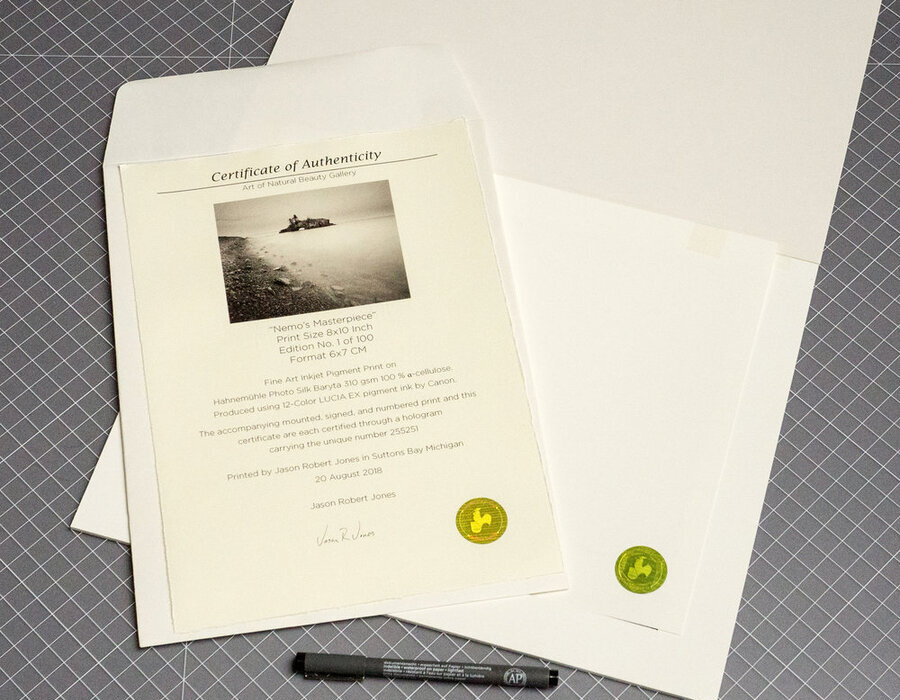Certificate of authenticity: an essential document for artists


A certificate of authenticity, or COA, is probably one of the most essential documents you should include in the process of selling your artwork. Many artists wonder where to start.
Thinking of helping you, we created this article with all the necessary information about this document.
What is a certificate of authenticity?
It is an official document that proves that the work is genuine and authentic. It is a useful tool to prove the origin, quality and guarantee to the buyer that the work is produced by the artist himself.
Ideally, it should keep track of all artworks that are built, regardless of whether they sell or not. In the case of a sale, a certificate of authenticity is normally one of the first documents provided to the buyer.
Why is the certificate important?
We live in a world where counterfeiting is quite common, thanks to the internet.
This document helps to prevent counterfeiting. The artist invests his time, money and talent in his work; therefore, it is important that they have some prevention of the risks they suffer.
In addition to functioning as a sales receipt, if the work increases in value over time, the COA works as a physical document that “traces” the origin of the work, delimiting who was in its possession.
How to write a certificate of authenticity?
- Artist name
- Title of work
- Conclusion year
- Overall dimensions
- Materials (types of ink, canvas, paper, etc.)
- Edition number, if multiple
- High resolution image of the work
- Additional information (what the work is about, how to preserve it, etc.)
- Declaration of authenticity (two or three lines)
Your certificate of authenticity acts as an extension of your artwork; so if you want to be seen as a major figure in the art market, your document needs to look professional.
Here is a model:
You may be interested
https://arteref.com/en/art-market/why-is-art-so-expensive/
Sources
Recent Posts
Como os Rankings Reordenam o Caos do Mundo da Arte
1. Um mundo inflacionado de arte Nunca se produziu tanta arte. Nunca existiram tantos artistas.…
Jaider Esbell: biografia, principais obras e legado
Jaider Esbell (1979–2021) foi um artista, curador e escritor indígena do povo Makuxi, nascido em…
Galeria Paulo Darzé apresenta exposição “Arquétipos” de O Bastardo
A Galeria Paulo Darzé tem o prazer de anunciar a abertura da exposição "Arquétipos", do…
Galeria 18 inaugura exposição individual “Partouze”, da artista Luísa Martins
A Galeria 18 inaugura no dia 16 de agosto a mostra Partouze, exposição individual da…
Centro Cultural Correios RJ recebe exposição do fotógrafo norte-americano Michael Naify
O Centro Cultural Correios RJ inaugura, no dia 23 de julho de 2025, das 16h…
Exposição coletiva ‘Maranhão na Jamaica’, uma colaboração entre Martins&Montero e Lima Galeria
Maranhão na Jamaica é uma exposição coletiva que reúne a produção artística contemporânea do estado…

